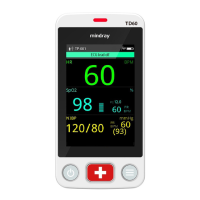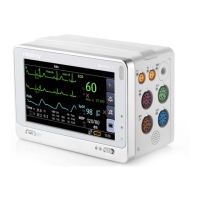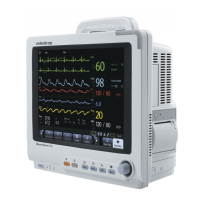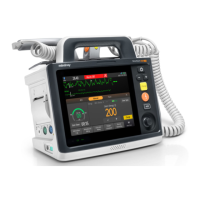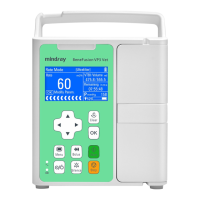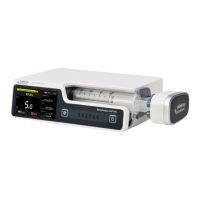BeneVision N Series Patient Monitor Operator’s Manual 34 - 3
34.1.3 Maintenance
You can check the patient’s parameter trends, anesthesia status, and triple low status.
Select Anesthesia Status or Triple Low to choose the indicator.
The anesthesia status indicator presents the patient’s status in terms of pain, consciousness, and neuromuscular
blockage.
The triple low indicator presents BIS, MAC and mean pressure. Postoperative mortality and hospital stay are
increased in patients having low MAC and low blood pressure. With low BIS value, the postoperative mortality
and hospital stay are further increased. (Sessler et al: Hospital Stay and Mortality Are Increased in Patients Having
a “Triple Low” of Low bood Pressure, Low Bispectral Index, and Low Minimum Alveolar Concentration of Volatile
Anesthesia.Anesthesiology 2012; 116: 1195–203)
The following figures show the anesthesia status indicator and triple low indicator:
■ The three arms of the anesthesia status indicator respectively indicate pain (Analgesia), consciousness
(Sedation), and neuromuscular blockage (Paralysis). You can select parameters for the anesthesia status
indicator. For more information, see 34.1.5.2Selecting Parameters for Anesthesia Status Indicator.
■ The three arms of the triple low indicator respectively indicate BIS, MAC, and mean blood pressure.
■ The length of the filling indicates parameter value.
■ The color of the arms indicates parameter status: green indicates that parameter value is within normal
range. Red indicates that parameter value is beyond normal range. Gray indicates that parameter value is
unavailable or invalid.
■ The black lines on the parameter arms indicate the normal range of corresponding parameters.
(1) Total triple low duration: if BIS, MAC, and Art-M values are lower than the threshold, the patient is in triple low
status. For information on setting the triple low threshold, see
34.1.5.5Setting Thresholds for Triple Low Parameters.
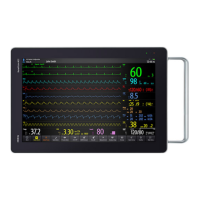
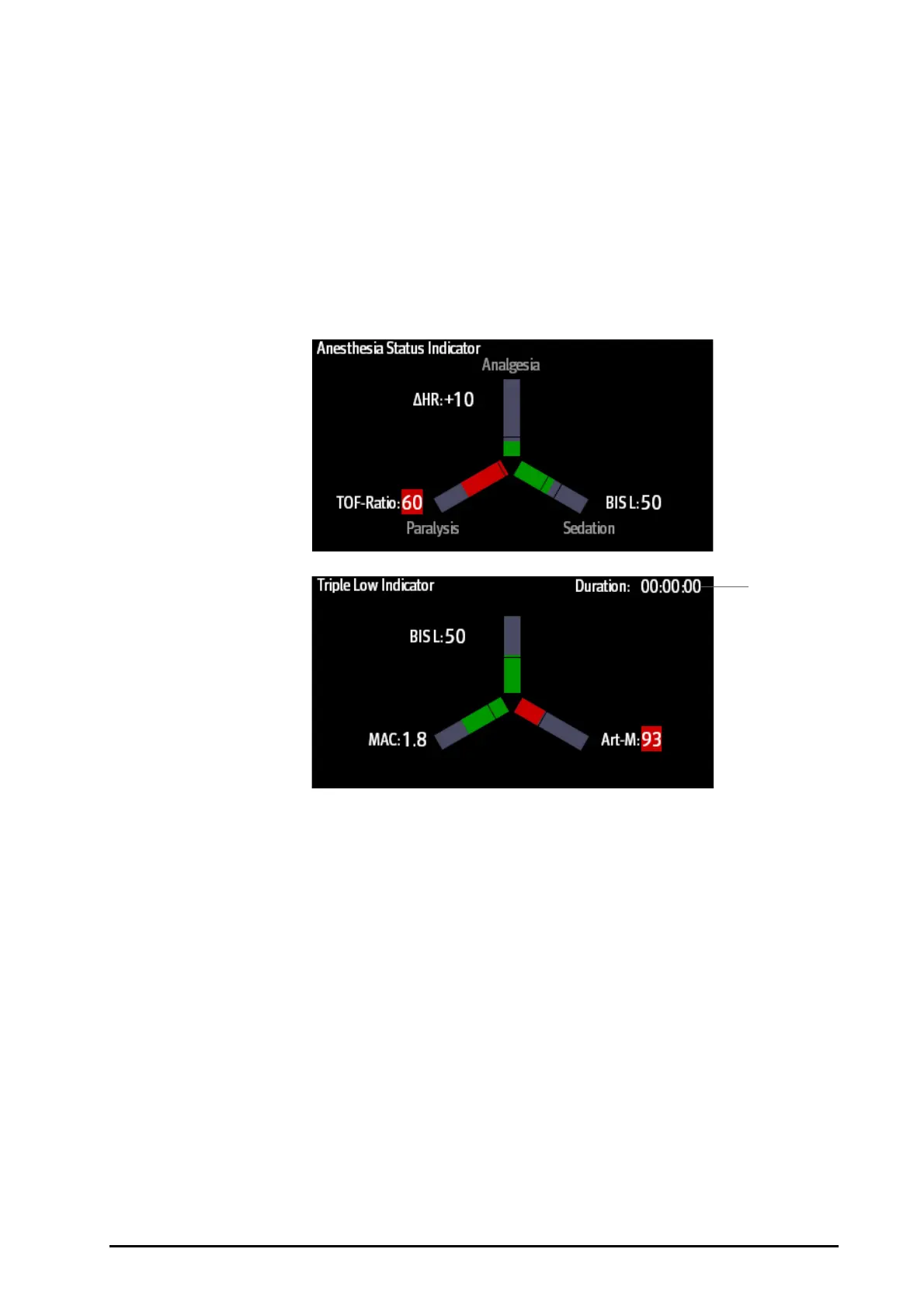